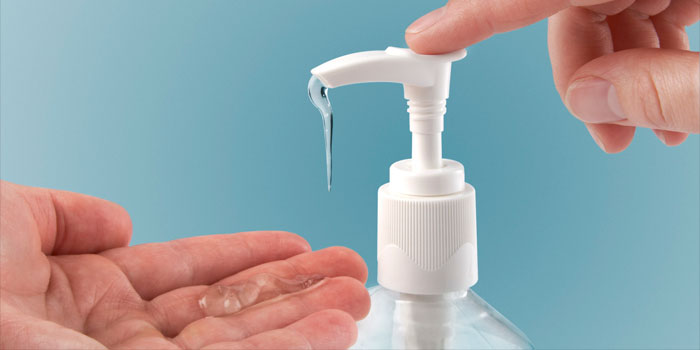Please pay attention to these rules when exporting hand sanitizer to Australia!
- Author:Anma
- Release Date:2020-04-08
According to the latest situation of Hong Mingda Logistics, Australia has made corresponding updates to the regulations on the import of hand sanitizer.

Australian hand sanitizers can be classified as cosmetics if they meet the following conditions, but they need to register with NICNAS to follow up the certificate.
NICNAS website: https://www.nicnas.gov.au/cosmetics-and-soaps/hand-sanitisers
But it cannot involve the following related uses or purposes:
(A) Active against viruses, fungi or other microorganisms (except bacteria);
(B) Uses related to diseases, illnesses or medical conditions;
(C) Active against named bacteria known to be related to diseases, illnesses or medical conditions;
(D) Used to pierce the skin or mucous membrane, used for cosmetics or any other purpose;
(E) For any procedures related to the risk of spreading diseases due to contact with blood or other body fluids;
(F) Use before making physical contact with someone who is receiving medical or health care services or undergoing any medical or health care procedures;
(G) For procedures involving venipuncture or injection
If they meet any conditions from A to G, they are subject to TGA supervision and need to be approved.
For details, please visit the official announcement of TGA: https://www.tga.gov.au/hand-sanitisers-and-covid-19
According to TGA regulations, hand disinfectants or antibacterial skin preparations are considered to be “general consumer products” (cosmetics), and are not subject to TGA control if the following conditions are met:
For personal or family use only, not for medical institutions (including elderly care institutions).
And claim to be limited to general low-level activity against bacteria or bacteria (eg killing 99.9% of bacteria),
And there is no declaration for viruses, and only contains low-risk ingredients (that is, it does not contain substances contained in Schedule 2, 3, 4 or 8 of Poisons Standard).
The National Industry Notification and Evaluation Program (NICNAS) regulates ingredients in cosmetics, while the Australian Competition and Consumer Commission (ACCC) regulates the labeling of cosmetics. Hand sanitizers that are regulated as cosmetics only allow low-level activity claims against bacteria or bacteria, such as "killing 99.9% of bacteria."
Antimicrobial hand hygiene products that require TGA assessment and are listed in the Australian Therapeutic Product Register (ARTG) include:
It is required to kill specific organisms (such as E. coli or viruses) and / or will be used in clinics or hospitals.
These products are regulated as registered over-the-counter drugs (OTC).
The claims allowed on the labels of these products depend on the product's recommended use and the data provided to support safety and effectiveness.

Australian hand sanitizers can be classified as cosmetics if they meet the following conditions, but they need to register with NICNAS to follow up the certificate.
NICNAS website: https://www.nicnas.gov.au/cosmetics-and-soaps/hand-sanitisers
But it cannot involve the following related uses or purposes:
(A) Active against viruses, fungi or other microorganisms (except bacteria);
(B) Uses related to diseases, illnesses or medical conditions;
(C) Active against named bacteria known to be related to diseases, illnesses or medical conditions;
(D) Used to pierce the skin or mucous membrane, used for cosmetics or any other purpose;
(E) For any procedures related to the risk of spreading diseases due to contact with blood or other body fluids;
(F) Use before making physical contact with someone who is receiving medical or health care services or undergoing any medical or health care procedures;
(G) For procedures involving venipuncture or injection
If they meet any conditions from A to G, they are subject to TGA supervision and need to be approved.
For details, please visit the official announcement of TGA: https://www.tga.gov.au/hand-sanitisers-and-covid-19
According to TGA regulations, hand disinfectants or antibacterial skin preparations are considered to be “general consumer products” (cosmetics), and are not subject to TGA control if the following conditions are met:
For personal or family use only, not for medical institutions (including elderly care institutions).
And claim to be limited to general low-level activity against bacteria or bacteria (eg killing 99.9% of bacteria),
And there is no declaration for viruses, and only contains low-risk ingredients (that is, it does not contain substances contained in Schedule 2, 3, 4 or 8 of Poisons Standard).
The National Industry Notification and Evaluation Program (NICNAS) regulates ingredients in cosmetics, while the Australian Competition and Consumer Commission (ACCC) regulates the labeling of cosmetics. Hand sanitizers that are regulated as cosmetics only allow low-level activity claims against bacteria or bacteria, such as "killing 99.9% of bacteria."
Antimicrobial hand hygiene products that require TGA assessment and are listed in the Australian Therapeutic Product Register (ARTG) include:
It is required to kill specific organisms (such as E. coli or viruses) and / or will be used in clinics or hospitals.
These products are regulated as registered over-the-counter drugs (OTC).
The claims allowed on the labels of these products depend on the product's recommended use and the data provided to support safety and effectiveness.
